Analyzing BBC's Organizational Culture, Power Dynamics and Motivation
VerifiedAdded on 2024/07/01
|22
|4841
|153
Case Study
AI Summary
This case study delves into the organizational behaviour of the British Broadcasting Corporation (BBC), examining its culture, power dynamics, and the impact of these factors on employee behaviour and motivation. It begins by identifying the earlier organizational culture within the BBC, using Handy's cultural typology, and discusses how culture, power, and politics have affected the organization in recent times. The analysis then explores how content and process theories of motivation, along with other motivational techniques, could improve effectiveness within BBC teams. Furthermore, it addresses how improved levels of motivation can contribute to achieving the organization's goals, emphasizing the importance of employee satisfaction, productivity, and positive work environments. The study references the Smith review and other relevant sources to support its findings and recommendations.
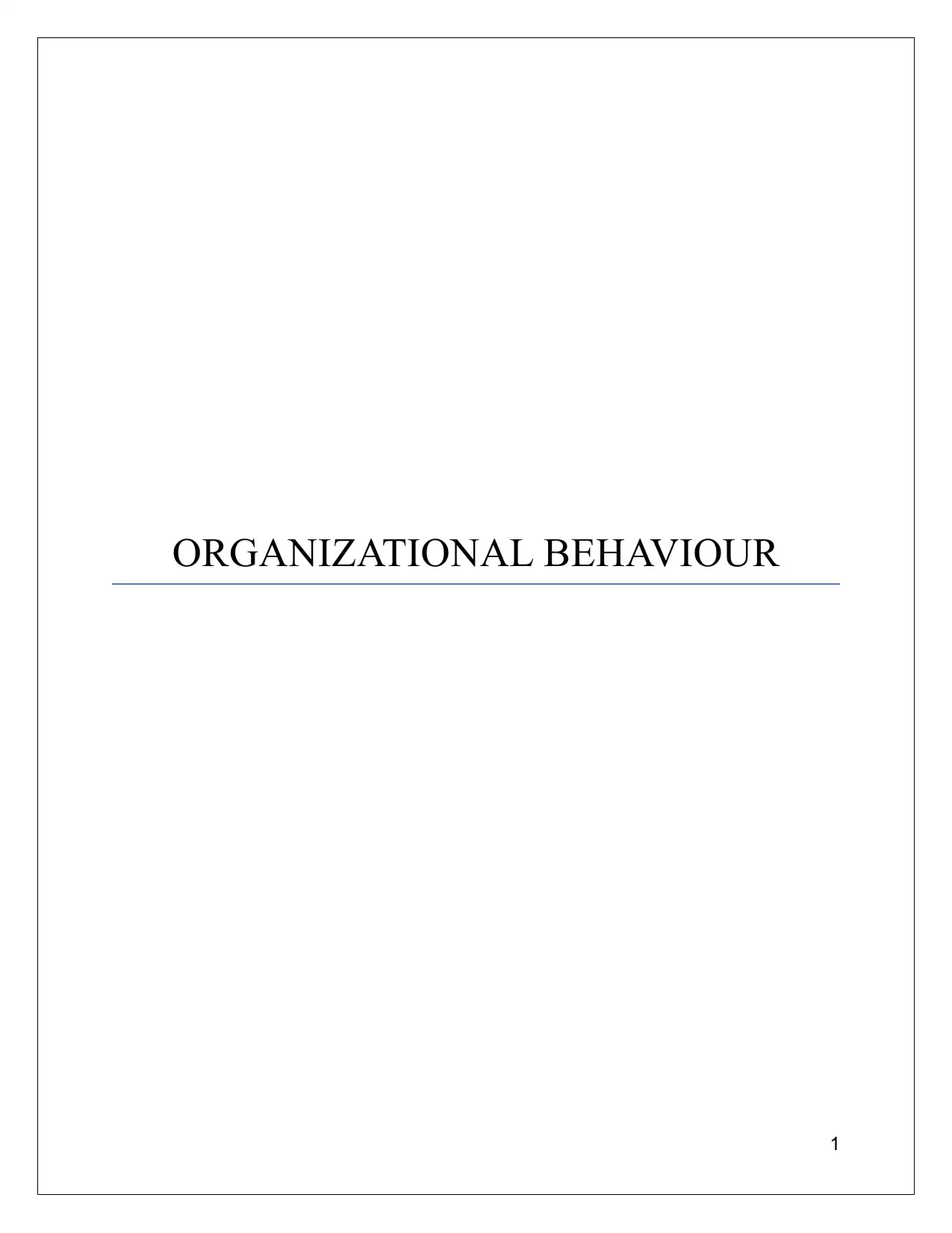
ORGANIZATIONAL BEHAVIOUR
1
1
Paraphrase This Document
Need a fresh take? Get an instant paraphrase of this document with our AI Paraphraser
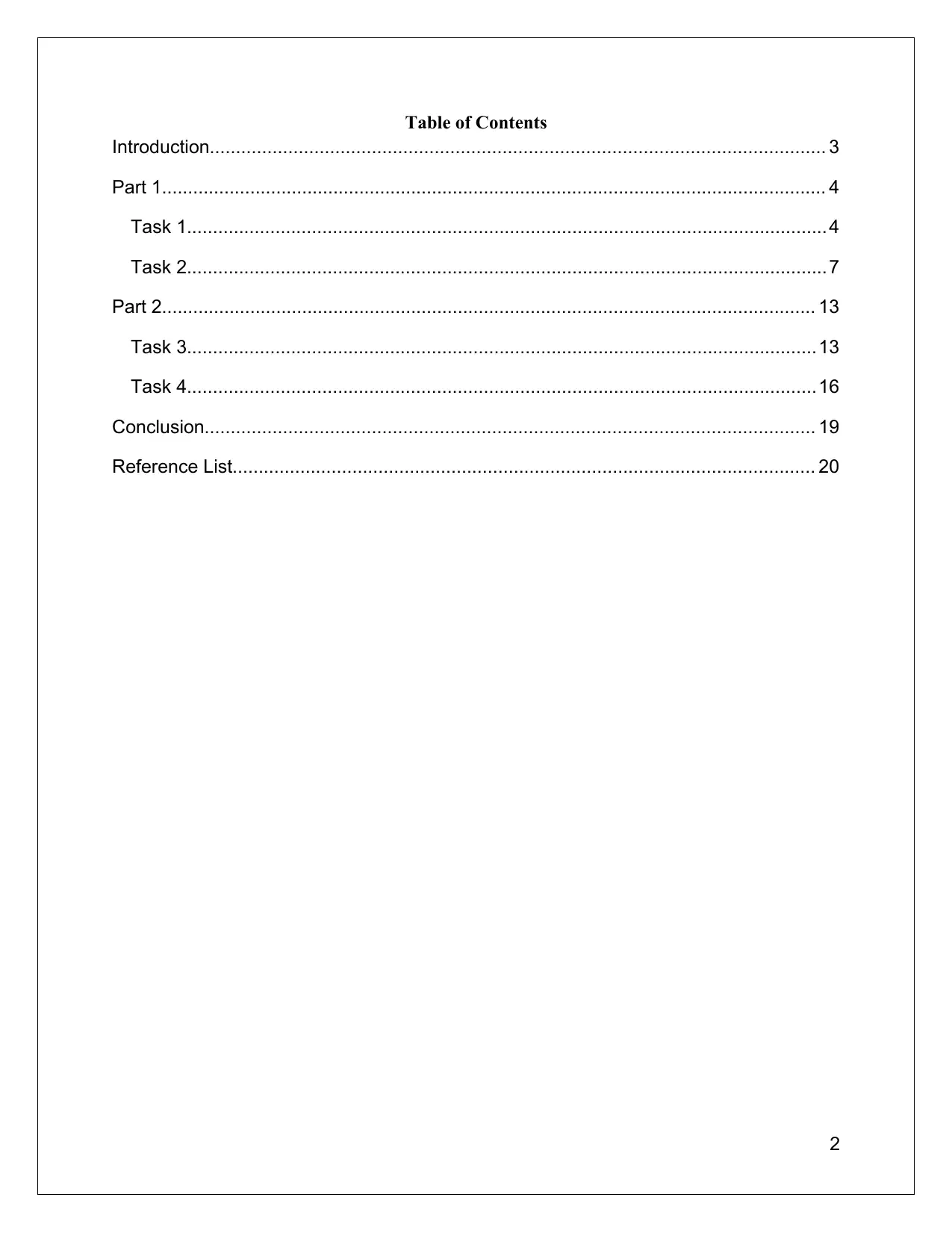
Table of Contents
Introduction...................................................................................................................... 3
Part 1................................................................................................................................ 4
Task 1...........................................................................................................................4
Task 2...........................................................................................................................7
Part 2.............................................................................................................................. 13
Task 3.........................................................................................................................13
Task 4.........................................................................................................................16
Conclusion..................................................................................................................... 19
Reference List................................................................................................................ 20
2
Introduction...................................................................................................................... 3
Part 1................................................................................................................................ 4
Task 1...........................................................................................................................4
Task 2...........................................................................................................................7
Part 2.............................................................................................................................. 13
Task 3.........................................................................................................................13
Task 4.........................................................................................................................16
Conclusion..................................................................................................................... 19
Reference List................................................................................................................ 20
2
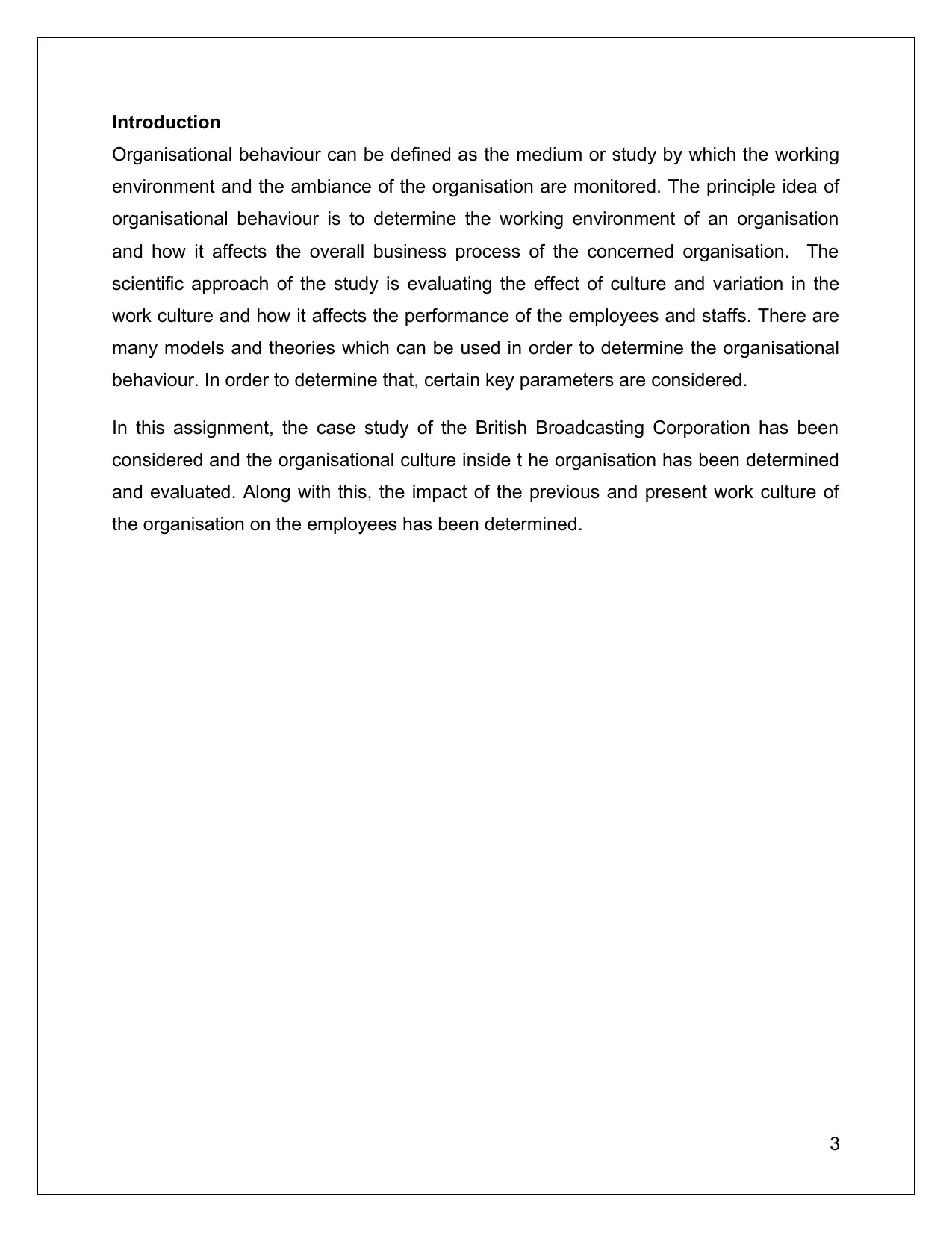
Introduction
Organisational behaviour can be defined as the medium or study by which the working
environment and the ambiance of the organisation are monitored. The principle idea of
organisational behaviour is to determine the working environment of an organisation
and how it affects the overall business process of the concerned organisation. The
scientific approach of the study is evaluating the effect of culture and variation in the
work culture and how it affects the performance of the employees and staffs. There are
many models and theories which can be used in order to determine the organisational
behaviour. In order to determine that, certain key parameters are considered.
In this assignment, the case study of the British Broadcasting Corporation has been
considered and the organisational culture inside t he organisation has been determined
and evaluated. Along with this, the impact of the previous and present work culture of
the organisation on the employees has been determined.
3
Organisational behaviour can be defined as the medium or study by which the working
environment and the ambiance of the organisation are monitored. The principle idea of
organisational behaviour is to determine the working environment of an organisation
and how it affects the overall business process of the concerned organisation. The
scientific approach of the study is evaluating the effect of culture and variation in the
work culture and how it affects the performance of the employees and staffs. There are
many models and theories which can be used in order to determine the organisational
behaviour. In order to determine that, certain key parameters are considered.
In this assignment, the case study of the British Broadcasting Corporation has been
considered and the organisational culture inside t he organisation has been determined
and evaluated. Along with this, the impact of the previous and present work culture of
the organisation on the employees has been determined.
3
⊘ This is a preview!⊘
Do you want full access?
Subscribe today to unlock all pages.

Trusted by 1+ million students worldwide
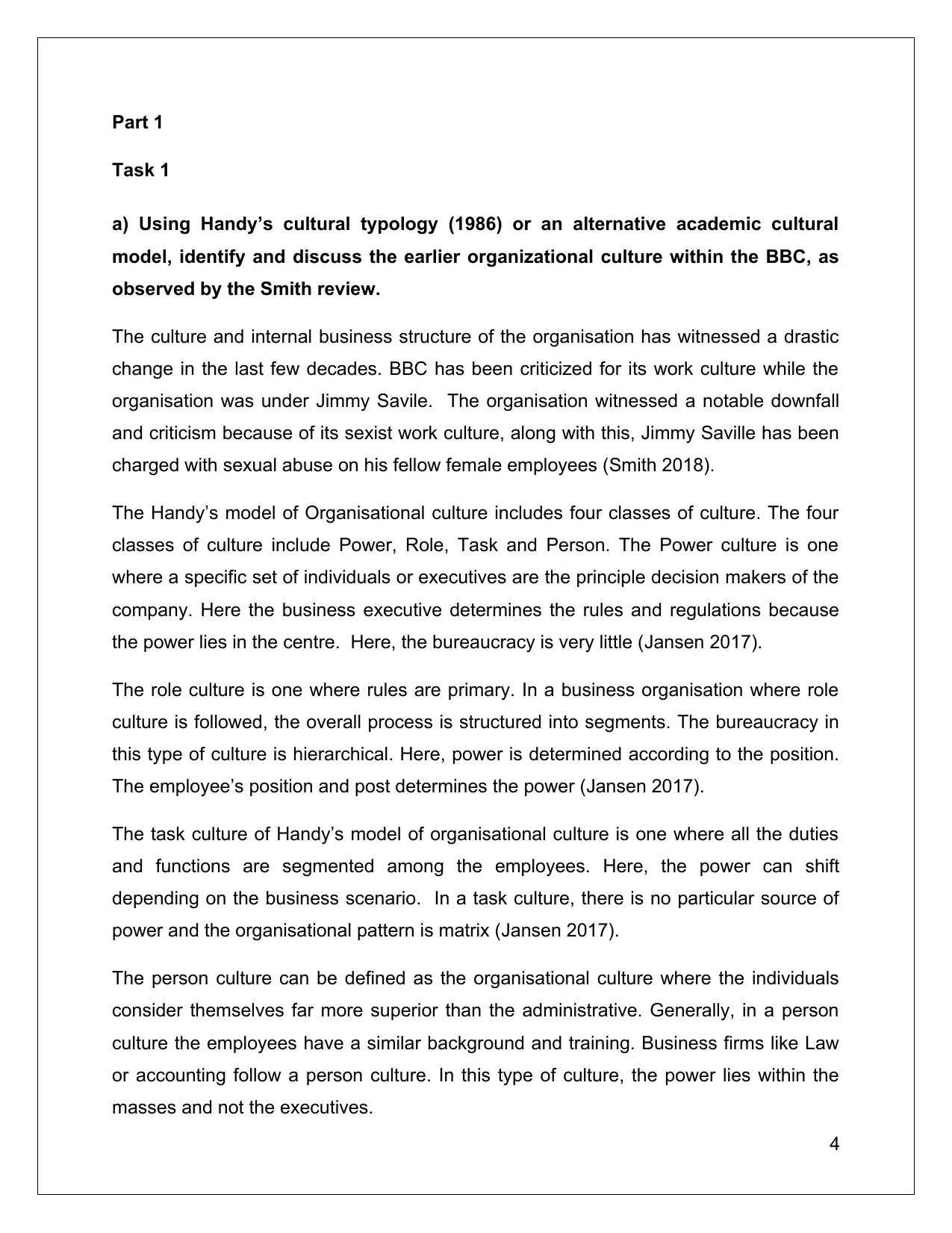
Part 1
Task 1
a) Using Handy’s cultural typology (1986) or an alternative academic cultural
model, identify and discuss the earlier organizational culture within the BBC, as
observed by the Smith review.
The culture and internal business structure of the organisation has witnessed a drastic
change in the last few decades. BBC has been criticized for its work culture while the
organisation was under Jimmy Savile. The organisation witnessed a notable downfall
and criticism because of its sexist work culture, along with this, Jimmy Saville has been
charged with sexual abuse on his fellow female employees (Smith 2018).
The Handy’s model of Organisational culture includes four classes of culture. The four
classes of culture include Power, Role, Task and Person. The Power culture is one
where a specific set of individuals or executives are the principle decision makers of the
company. Here the business executive determines the rules and regulations because
the power lies in the centre. Here, the bureaucracy is very little (Jansen 2017).
The role culture is one where rules are primary. In a business organisation where role
culture is followed, the overall process is structured into segments. The bureaucracy in
this type of culture is hierarchical. Here, power is determined according to the position.
The employee’s position and post determines the power (Jansen 2017).
The task culture of Handy’s model of organisational culture is one where all the duties
and functions are segmented among the employees. Here, the power can shift
depending on the business scenario. In a task culture, there is no particular source of
power and the organisational pattern is matrix (Jansen 2017).
The person culture can be defined as the organisational culture where the individuals
consider themselves far more superior than the administrative. Generally, in a person
culture the employees have a similar background and training. Business firms like Law
or accounting follow a person culture. In this type of culture, the power lies within the
masses and not the executives.
4
Task 1
a) Using Handy’s cultural typology (1986) or an alternative academic cultural
model, identify and discuss the earlier organizational culture within the BBC, as
observed by the Smith review.
The culture and internal business structure of the organisation has witnessed a drastic
change in the last few decades. BBC has been criticized for its work culture while the
organisation was under Jimmy Savile. The organisation witnessed a notable downfall
and criticism because of its sexist work culture, along with this, Jimmy Saville has been
charged with sexual abuse on his fellow female employees (Smith 2018).
The Handy’s model of Organisational culture includes four classes of culture. The four
classes of culture include Power, Role, Task and Person. The Power culture is one
where a specific set of individuals or executives are the principle decision makers of the
company. Here the business executive determines the rules and regulations because
the power lies in the centre. Here, the bureaucracy is very little (Jansen 2017).
The role culture is one where rules are primary. In a business organisation where role
culture is followed, the overall process is structured into segments. The bureaucracy in
this type of culture is hierarchical. Here, power is determined according to the position.
The employee’s position and post determines the power (Jansen 2017).
The task culture of Handy’s model of organisational culture is one where all the duties
and functions are segmented among the employees. Here, the power can shift
depending on the business scenario. In a task culture, there is no particular source of
power and the organisational pattern is matrix (Jansen 2017).
The person culture can be defined as the organisational culture where the individuals
consider themselves far more superior than the administrative. Generally, in a person
culture the employees have a similar background and training. Business firms like Law
or accounting follow a person culture. In this type of culture, the power lies within the
masses and not the executives.
4
Paraphrase This Document
Need a fresh take? Get an instant paraphrase of this document with our AI Paraphraser
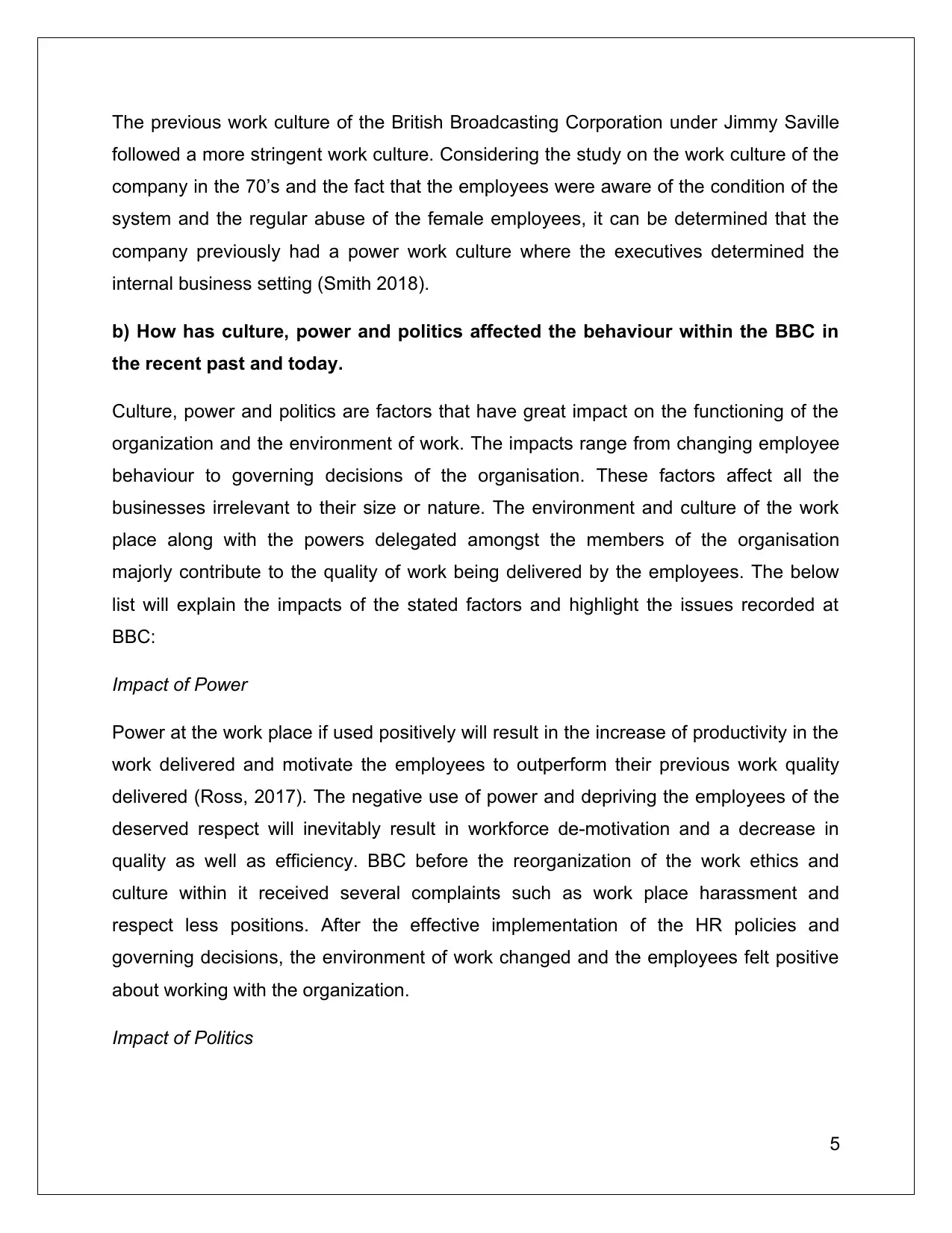
The previous work culture of the British Broadcasting Corporation under Jimmy Saville
followed a more stringent work culture. Considering the study on the work culture of the
company in the 70’s and the fact that the employees were aware of the condition of the
system and the regular abuse of the female employees, it can be determined that the
company previously had a power work culture where the executives determined the
internal business setting (Smith 2018).
b) How has culture, power and politics affected the behaviour within the BBC in
the recent past and today.
Culture, power and politics are factors that have great impact on the functioning of the
organization and the environment of work. The impacts range from changing employee
behaviour to governing decisions of the organisation. These factors affect all the
businesses irrelevant to their size or nature. The environment and culture of the work
place along with the powers delegated amongst the members of the organisation
majorly contribute to the quality of work being delivered by the employees. The below
list will explain the impacts of the stated factors and highlight the issues recorded at
BBC:
Impact of Power
Power at the work place if used positively will result in the increase of productivity in the
work delivered and motivate the employees to outperform their previous work quality
delivered (Ross, 2017). The negative use of power and depriving the employees of the
deserved respect will inevitably result in workforce de-motivation and a decrease in
quality as well as efficiency. BBC before the reorganization of the work ethics and
culture within it received several complaints such as work place harassment and
respect less positions. After the effective implementation of the HR policies and
governing decisions, the environment of work changed and the employees felt positive
about working with the organization.
Impact of Politics
5
followed a more stringent work culture. Considering the study on the work culture of the
company in the 70’s and the fact that the employees were aware of the condition of the
system and the regular abuse of the female employees, it can be determined that the
company previously had a power work culture where the executives determined the
internal business setting (Smith 2018).
b) How has culture, power and politics affected the behaviour within the BBC in
the recent past and today.
Culture, power and politics are factors that have great impact on the functioning of the
organization and the environment of work. The impacts range from changing employee
behaviour to governing decisions of the organisation. These factors affect all the
businesses irrelevant to their size or nature. The environment and culture of the work
place along with the powers delegated amongst the members of the organisation
majorly contribute to the quality of work being delivered by the employees. The below
list will explain the impacts of the stated factors and highlight the issues recorded at
BBC:
Impact of Power
Power at the work place if used positively will result in the increase of productivity in the
work delivered and motivate the employees to outperform their previous work quality
delivered (Ross, 2017). The negative use of power and depriving the employees of the
deserved respect will inevitably result in workforce de-motivation and a decrease in
quality as well as efficiency. BBC before the reorganization of the work ethics and
culture within it received several complaints such as work place harassment and
respect less positions. After the effective implementation of the HR policies and
governing decisions, the environment of work changed and the employees felt positive
about working with the organization.
Impact of Politics
5
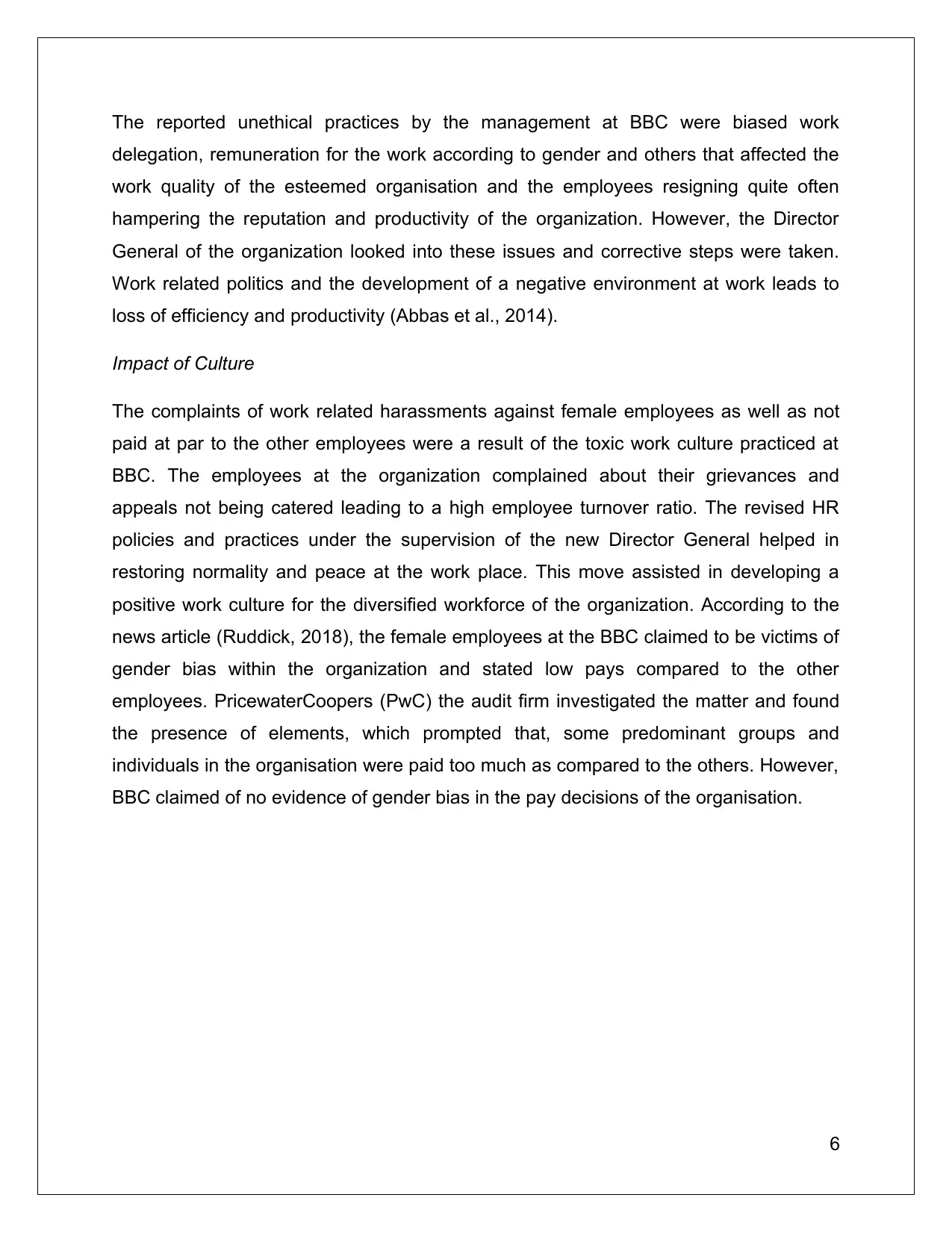
The reported unethical practices by the management at BBC were biased work
delegation, remuneration for the work according to gender and others that affected the
work quality of the esteemed organisation and the employees resigning quite often
hampering the reputation and productivity of the organization. However, the Director
General of the organization looked into these issues and corrective steps were taken.
Work related politics and the development of a negative environment at work leads to
loss of efficiency and productivity (Abbas et al., 2014).
Impact of Culture
The complaints of work related harassments against female employees as well as not
paid at par to the other employees were a result of the toxic work culture practiced at
BBC. The employees at the organization complained about their grievances and
appeals not being catered leading to a high employee turnover ratio. The revised HR
policies and practices under the supervision of the new Director General helped in
restoring normality and peace at the work place. This move assisted in developing a
positive work culture for the diversified workforce of the organization. According to the
news article (Ruddick, 2018), the female employees at the BBC claimed to be victims of
gender bias within the organization and stated low pays compared to the other
employees. PricewaterCoopers (PwC) the audit firm investigated the matter and found
the presence of elements, which prompted that, some predominant groups and
individuals in the organisation were paid too much as compared to the others. However,
BBC claimed of no evidence of gender bias in the pay decisions of the organisation.
6
delegation, remuneration for the work according to gender and others that affected the
work quality of the esteemed organisation and the employees resigning quite often
hampering the reputation and productivity of the organization. However, the Director
General of the organization looked into these issues and corrective steps were taken.
Work related politics and the development of a negative environment at work leads to
loss of efficiency and productivity (Abbas et al., 2014).
Impact of Culture
The complaints of work related harassments against female employees as well as not
paid at par to the other employees were a result of the toxic work culture practiced at
BBC. The employees at the organization complained about their grievances and
appeals not being catered leading to a high employee turnover ratio. The revised HR
policies and practices under the supervision of the new Director General helped in
restoring normality and peace at the work place. This move assisted in developing a
positive work culture for the diversified workforce of the organization. According to the
news article (Ruddick, 2018), the female employees at the BBC claimed to be victims of
gender bias within the organization and stated low pays compared to the other
employees. PricewaterCoopers (PwC) the audit firm investigated the matter and found
the presence of elements, which prompted that, some predominant groups and
individuals in the organisation were paid too much as compared to the others. However,
BBC claimed of no evidence of gender bias in the pay decisions of the organisation.
6
⊘ This is a preview!⊘
Do you want full access?
Subscribe today to unlock all pages.

Trusted by 1+ million students worldwide
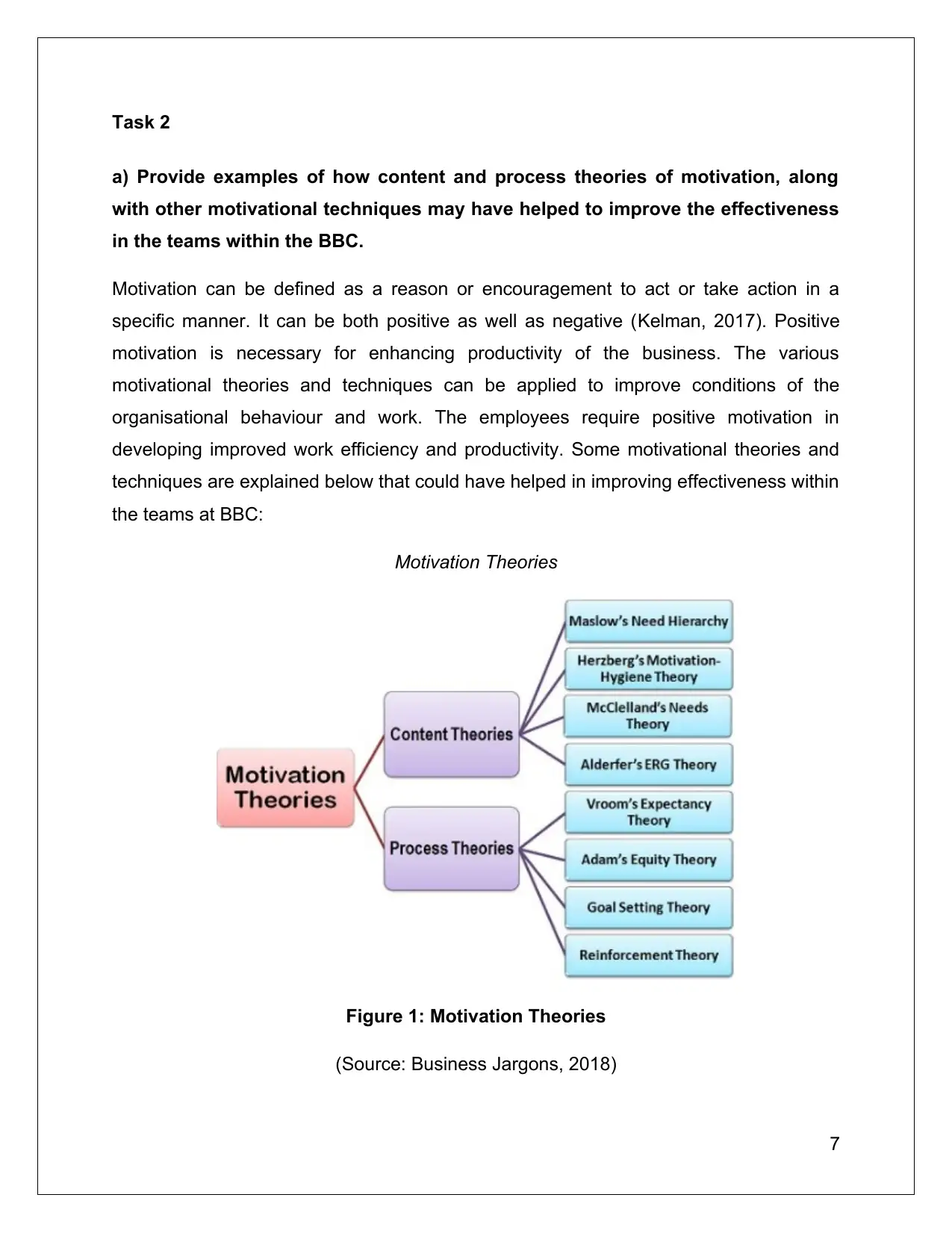
Task 2
a) Provide examples of how content and process theories of motivation, along
with other motivational techniques may have helped to improve the effectiveness
in the teams within the BBC.
Motivation can be defined as a reason or encouragement to act or take action in a
specific manner. It can be both positive as well as negative (Kelman, 2017). Positive
motivation is necessary for enhancing productivity of the business. The various
motivational theories and techniques can be applied to improve conditions of the
organisational behaviour and work. The employees require positive motivation in
developing improved work efficiency and productivity. Some motivational theories and
techniques are explained below that could have helped in improving effectiveness within
the teams at BBC:
Motivation Theories
Figure 1: Motivation Theories
(Source: Business Jargons, 2018)
7
a) Provide examples of how content and process theories of motivation, along
with other motivational techniques may have helped to improve the effectiveness
in the teams within the BBC.
Motivation can be defined as a reason or encouragement to act or take action in a
specific manner. It can be both positive as well as negative (Kelman, 2017). Positive
motivation is necessary for enhancing productivity of the business. The various
motivational theories and techniques can be applied to improve conditions of the
organisational behaviour and work. The employees require positive motivation in
developing improved work efficiency and productivity. Some motivational theories and
techniques are explained below that could have helped in improving effectiveness within
the teams at BBC:
Motivation Theories
Figure 1: Motivation Theories
(Source: Business Jargons, 2018)
7
Paraphrase This Document
Need a fresh take? Get an instant paraphrase of this document with our AI Paraphraser
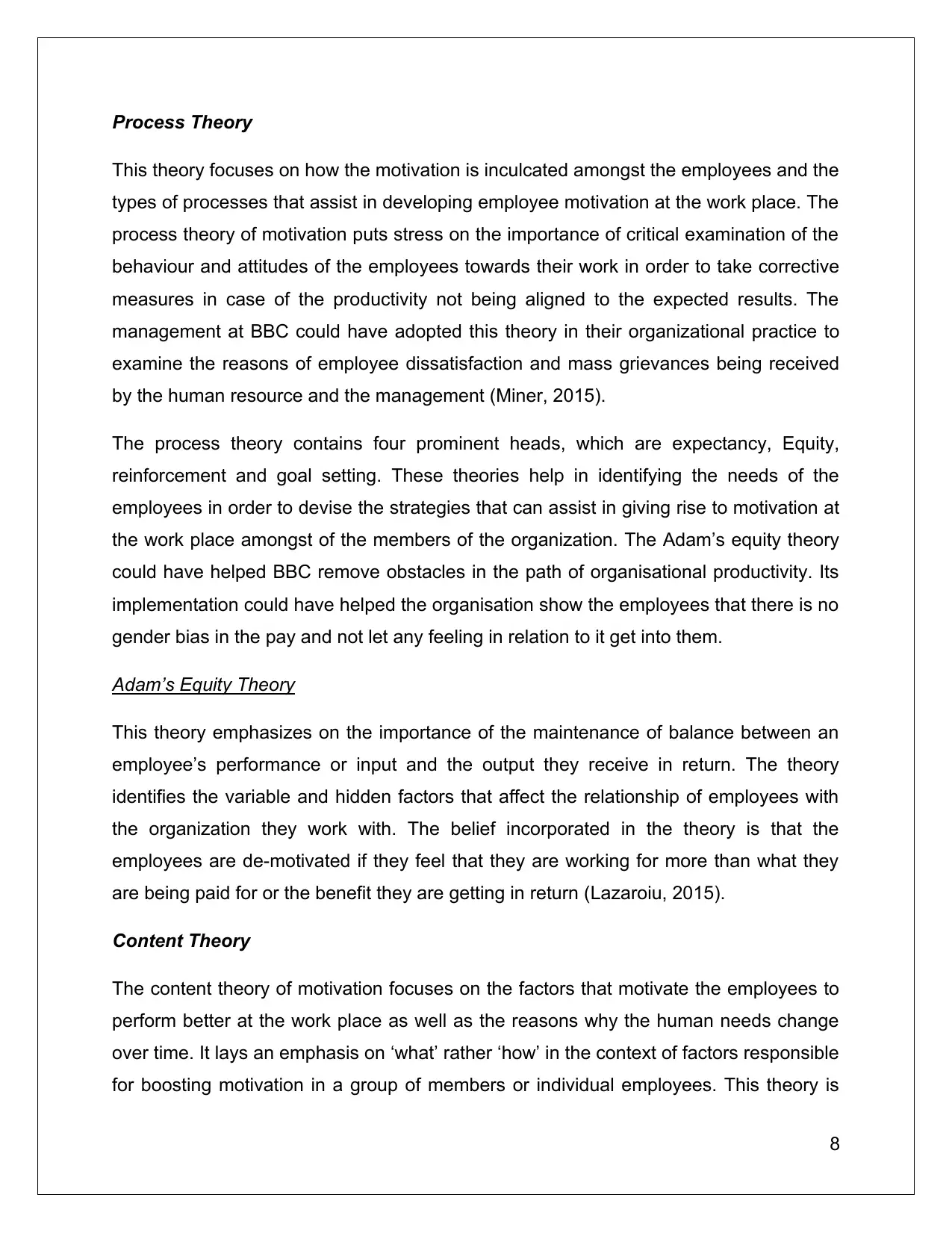
Process Theory
This theory focuses on how the motivation is inculcated amongst the employees and the
types of processes that assist in developing employee motivation at the work place. The
process theory of motivation puts stress on the importance of critical examination of the
behaviour and attitudes of the employees towards their work in order to take corrective
measures in case of the productivity not being aligned to the expected results. The
management at BBC could have adopted this theory in their organizational practice to
examine the reasons of employee dissatisfaction and mass grievances being received
by the human resource and the management (Miner, 2015).
The process theory contains four prominent heads, which are expectancy, Equity,
reinforcement and goal setting. These theories help in identifying the needs of the
employees in order to devise the strategies that can assist in giving rise to motivation at
the work place amongst of the members of the organization. The Adam’s equity theory
could have helped BBC remove obstacles in the path of organisational productivity. Its
implementation could have helped the organisation show the employees that there is no
gender bias in the pay and not let any feeling in relation to it get into them.
Adam’s Equity Theory
This theory emphasizes on the importance of the maintenance of balance between an
employee’s performance or input and the output they receive in return. The theory
identifies the variable and hidden factors that affect the relationship of employees with
the organization they work with. The belief incorporated in the theory is that the
employees are de-motivated if they feel that they are working for more than what they
are being paid for or the benefit they are getting in return (Lazaroiu, 2015).
Content Theory
The content theory of motivation focuses on the factors that motivate the employees to
perform better at the work place as well as the reasons why the human needs change
over time. It lays an emphasis on ‘what’ rather ‘how’ in the context of factors responsible
for boosting motivation in a group of members or individual employees. This theory is
8
This theory focuses on how the motivation is inculcated amongst the employees and the
types of processes that assist in developing employee motivation at the work place. The
process theory of motivation puts stress on the importance of critical examination of the
behaviour and attitudes of the employees towards their work in order to take corrective
measures in case of the productivity not being aligned to the expected results. The
management at BBC could have adopted this theory in their organizational practice to
examine the reasons of employee dissatisfaction and mass grievances being received
by the human resource and the management (Miner, 2015).
The process theory contains four prominent heads, which are expectancy, Equity,
reinforcement and goal setting. These theories help in identifying the needs of the
employees in order to devise the strategies that can assist in giving rise to motivation at
the work place amongst of the members of the organization. The Adam’s equity theory
could have helped BBC remove obstacles in the path of organisational productivity. Its
implementation could have helped the organisation show the employees that there is no
gender bias in the pay and not let any feeling in relation to it get into them.
Adam’s Equity Theory
This theory emphasizes on the importance of the maintenance of balance between an
employee’s performance or input and the output they receive in return. The theory
identifies the variable and hidden factors that affect the relationship of employees with
the organization they work with. The belief incorporated in the theory is that the
employees are de-motivated if they feel that they are working for more than what they
are being paid for or the benefit they are getting in return (Lazaroiu, 2015).
Content Theory
The content theory of motivation focuses on the factors that motivate the employees to
perform better at the work place as well as the reasons why the human needs change
over time. It lays an emphasis on ‘what’ rather ‘how’ in the context of factors responsible
for boosting motivation in a group of members or individual employees. This theory is
8
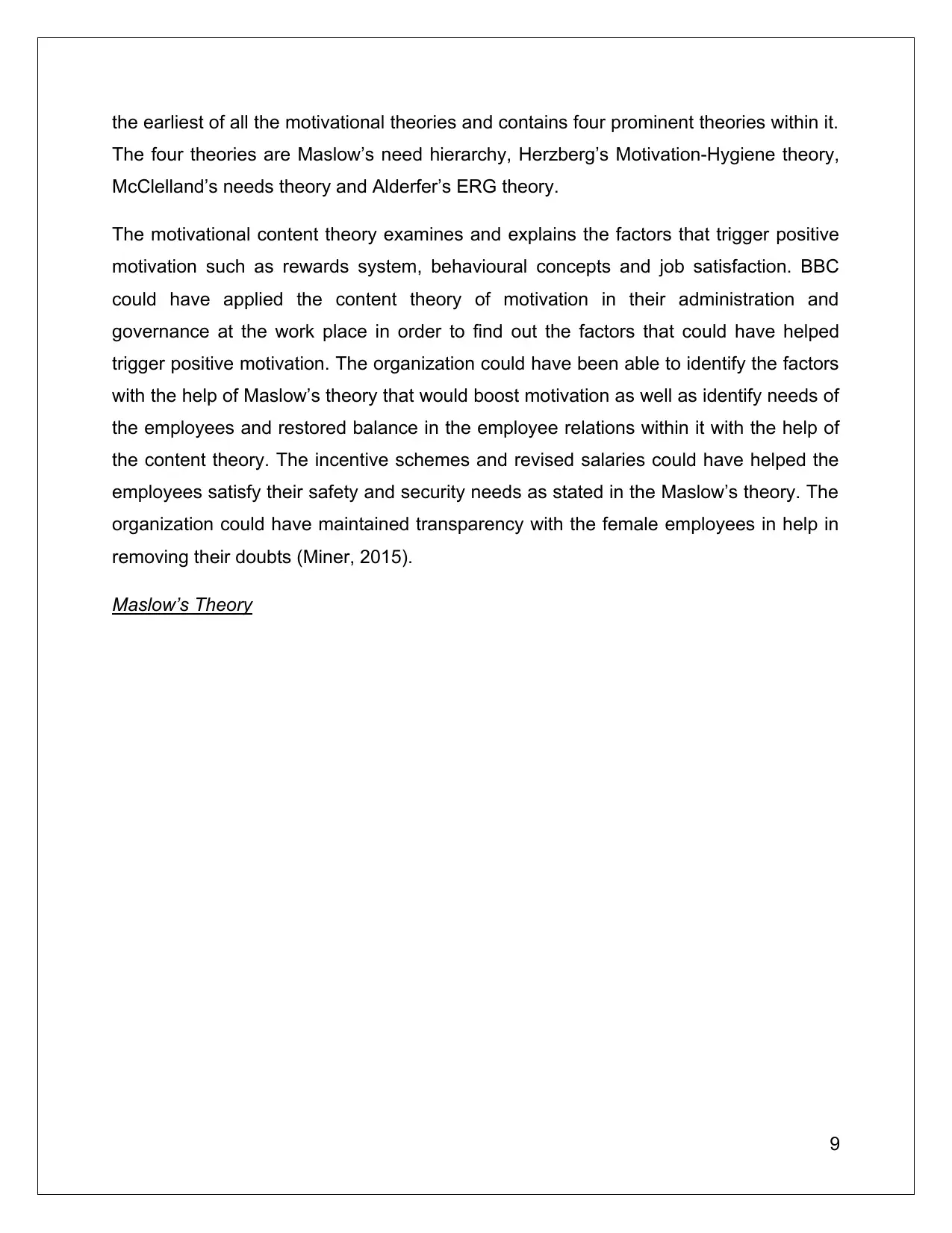
the earliest of all the motivational theories and contains four prominent theories within it.
The four theories are Maslow’s need hierarchy, Herzberg’s Motivation-Hygiene theory,
McClelland’s needs theory and Alderfer’s ERG theory.
The motivational content theory examines and explains the factors that trigger positive
motivation such as rewards system, behavioural concepts and job satisfaction. BBC
could have applied the content theory of motivation in their administration and
governance at the work place in order to find out the factors that could have helped
trigger positive motivation. The organization could have been able to identify the factors
with the help of Maslow’s theory that would boost motivation as well as identify needs of
the employees and restored balance in the employee relations within it with the help of
the content theory. The incentive schemes and revised salaries could have helped the
employees satisfy their safety and security needs as stated in the Maslow’s theory. The
organization could have maintained transparency with the female employees in help in
removing their doubts (Miner, 2015).
Maslow’s Theory
9
The four theories are Maslow’s need hierarchy, Herzberg’s Motivation-Hygiene theory,
McClelland’s needs theory and Alderfer’s ERG theory.
The motivational content theory examines and explains the factors that trigger positive
motivation such as rewards system, behavioural concepts and job satisfaction. BBC
could have applied the content theory of motivation in their administration and
governance at the work place in order to find out the factors that could have helped
trigger positive motivation. The organization could have been able to identify the factors
with the help of Maslow’s theory that would boost motivation as well as identify needs of
the employees and restored balance in the employee relations within it with the help of
the content theory. The incentive schemes and revised salaries could have helped the
employees satisfy their safety and security needs as stated in the Maslow’s theory. The
organization could have maintained transparency with the female employees in help in
removing their doubts (Miner, 2015).
Maslow’s Theory
9
⊘ This is a preview!⊘
Do you want full access?
Subscribe today to unlock all pages.

Trusted by 1+ million students worldwide
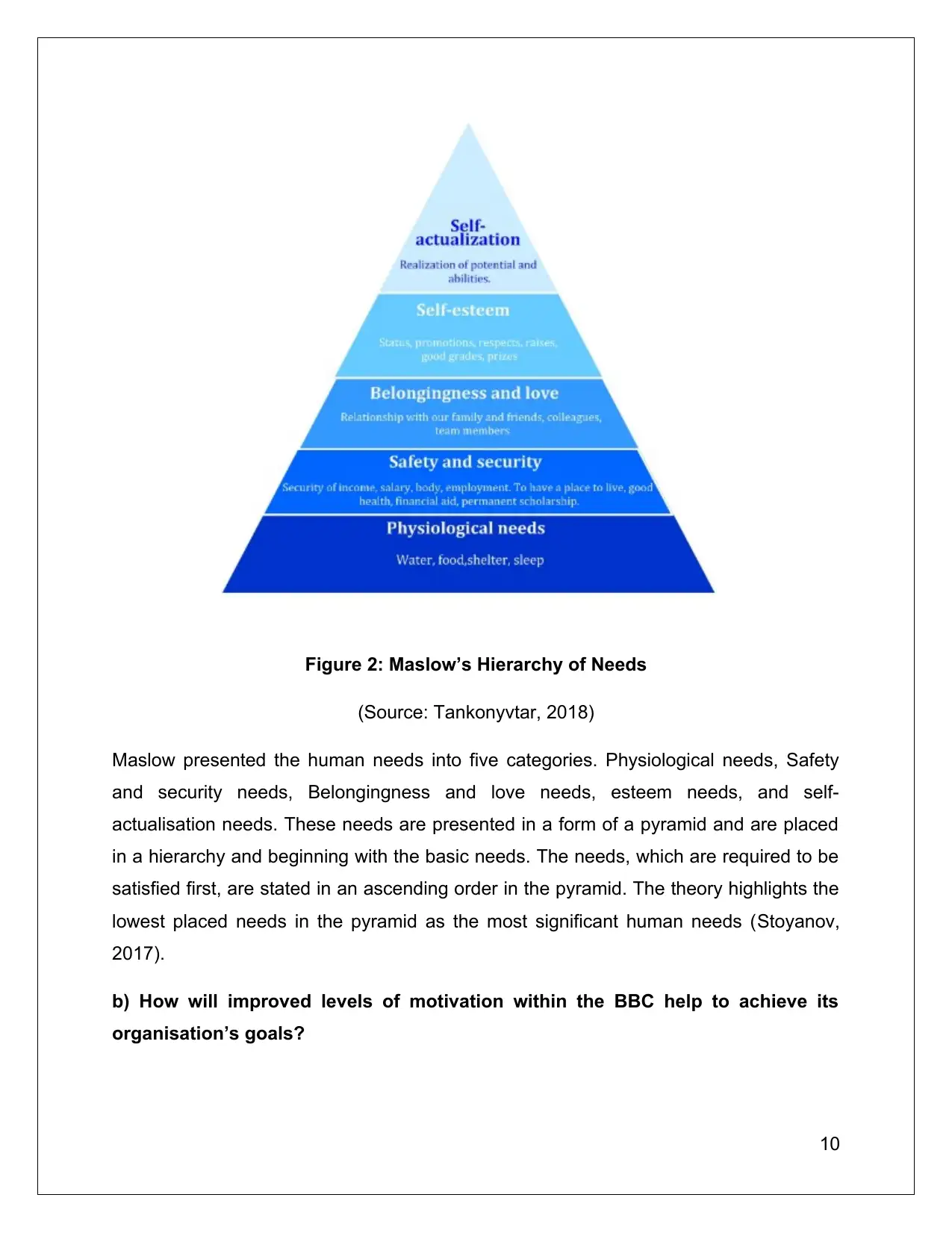
Figure 2: Maslow’s Hierarchy of Needs
(Source: Tankonyvtar, 2018)
Maslow presented the human needs into five categories. Physiological needs, Safety
and security needs, Belongingness and love needs, esteem needs, and self-
actualisation needs. These needs are presented in a form of a pyramid and are placed
in a hierarchy and beginning with the basic needs. The needs, which are required to be
satisfied first, are stated in an ascending order in the pyramid. The theory highlights the
lowest placed needs in the pyramid as the most significant human needs (Stoyanov,
2017).
b) How will improved levels of motivation within the BBC help to achieve its
organisation’s goals?
10
(Source: Tankonyvtar, 2018)
Maslow presented the human needs into five categories. Physiological needs, Safety
and security needs, Belongingness and love needs, esteem needs, and self-
actualisation needs. These needs are presented in a form of a pyramid and are placed
in a hierarchy and beginning with the basic needs. The needs, which are required to be
satisfied first, are stated in an ascending order in the pyramid. The theory highlights the
lowest placed needs in the pyramid as the most significant human needs (Stoyanov,
2017).
b) How will improved levels of motivation within the BBC help to achieve its
organisation’s goals?
10
Paraphrase This Document
Need a fresh take? Get an instant paraphrase of this document with our AI Paraphraser
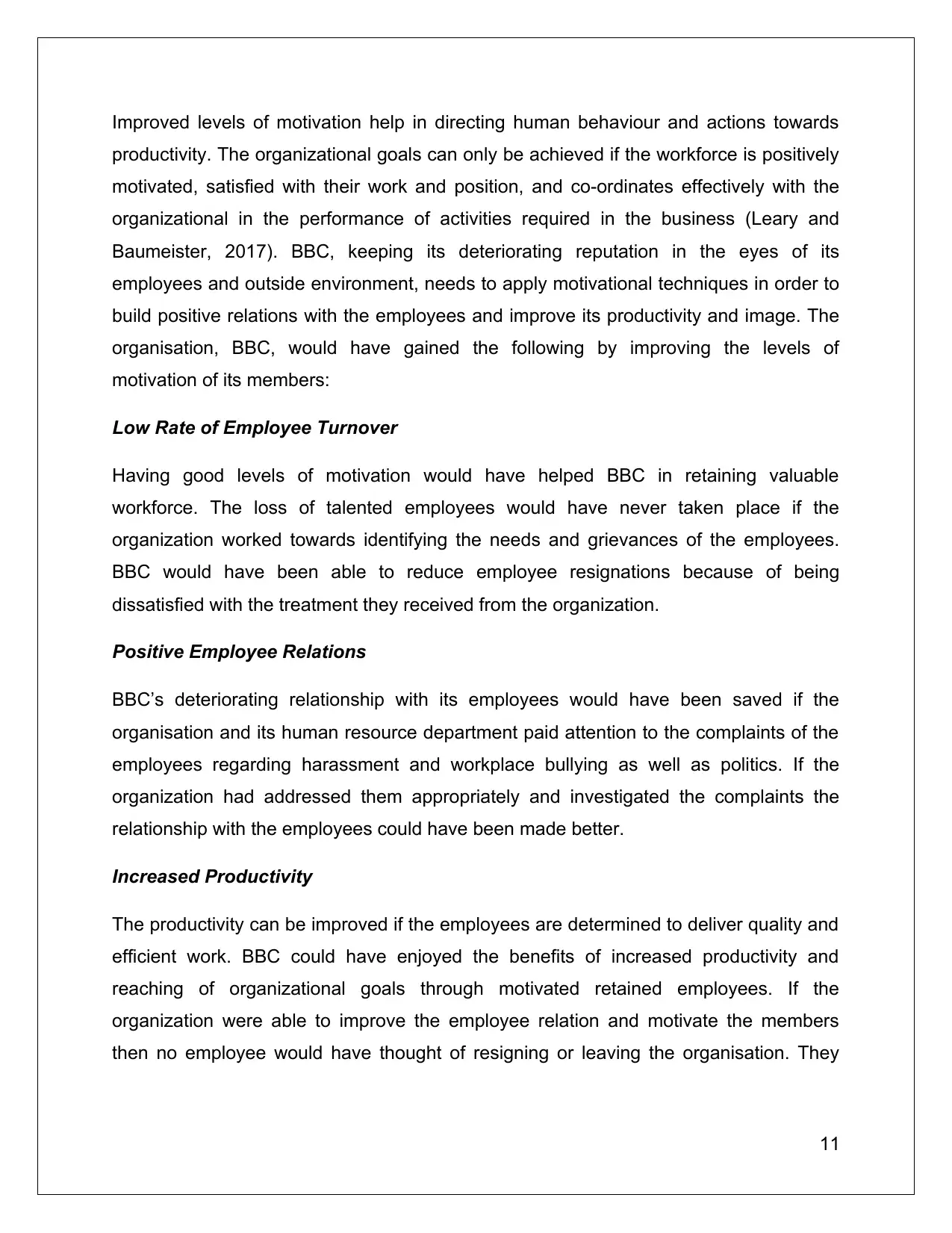
Improved levels of motivation help in directing human behaviour and actions towards
productivity. The organizational goals can only be achieved if the workforce is positively
motivated, satisfied with their work and position, and co-ordinates effectively with the
organizational in the performance of activities required in the business (Leary and
Baumeister, 2017). BBC, keeping its deteriorating reputation in the eyes of its
employees and outside environment, needs to apply motivational techniques in order to
build positive relations with the employees and improve its productivity and image. The
organisation, BBC, would have gained the following by improving the levels of
motivation of its members:
Low Rate of Employee Turnover
Having good levels of motivation would have helped BBC in retaining valuable
workforce. The loss of talented employees would have never taken place if the
organization worked towards identifying the needs and grievances of the employees.
BBC would have been able to reduce employee resignations because of being
dissatisfied with the treatment they received from the organization.
Positive Employee Relations
BBC’s deteriorating relationship with its employees would have been saved if the
organisation and its human resource department paid attention to the complaints of the
employees regarding harassment and workplace bullying as well as politics. If the
organization had addressed them appropriately and investigated the complaints the
relationship with the employees could have been made better.
Increased Productivity
The productivity can be improved if the employees are determined to deliver quality and
efficient work. BBC could have enjoyed the benefits of increased productivity and
reaching of organizational goals through motivated retained employees. If the
organization were able to improve the employee relation and motivate the members
then no employee would have thought of resigning or leaving the organisation. They
11
productivity. The organizational goals can only be achieved if the workforce is positively
motivated, satisfied with their work and position, and co-ordinates effectively with the
organizational in the performance of activities required in the business (Leary and
Baumeister, 2017). BBC, keeping its deteriorating reputation in the eyes of its
employees and outside environment, needs to apply motivational techniques in order to
build positive relations with the employees and improve its productivity and image. The
organisation, BBC, would have gained the following by improving the levels of
motivation of its members:
Low Rate of Employee Turnover
Having good levels of motivation would have helped BBC in retaining valuable
workforce. The loss of talented employees would have never taken place if the
organization worked towards identifying the needs and grievances of the employees.
BBC would have been able to reduce employee resignations because of being
dissatisfied with the treatment they received from the organization.
Positive Employee Relations
BBC’s deteriorating relationship with its employees would have been saved if the
organisation and its human resource department paid attention to the complaints of the
employees regarding harassment and workplace bullying as well as politics. If the
organization had addressed them appropriately and investigated the complaints the
relationship with the employees could have been made better.
Increased Productivity
The productivity can be improved if the employees are determined to deliver quality and
efficient work. BBC could have enjoyed the benefits of increased productivity and
reaching of organizational goals through motivated retained employees. If the
organization were able to improve the employee relation and motivate the members
then no employee would have thought of resigning or leaving the organisation. They
11
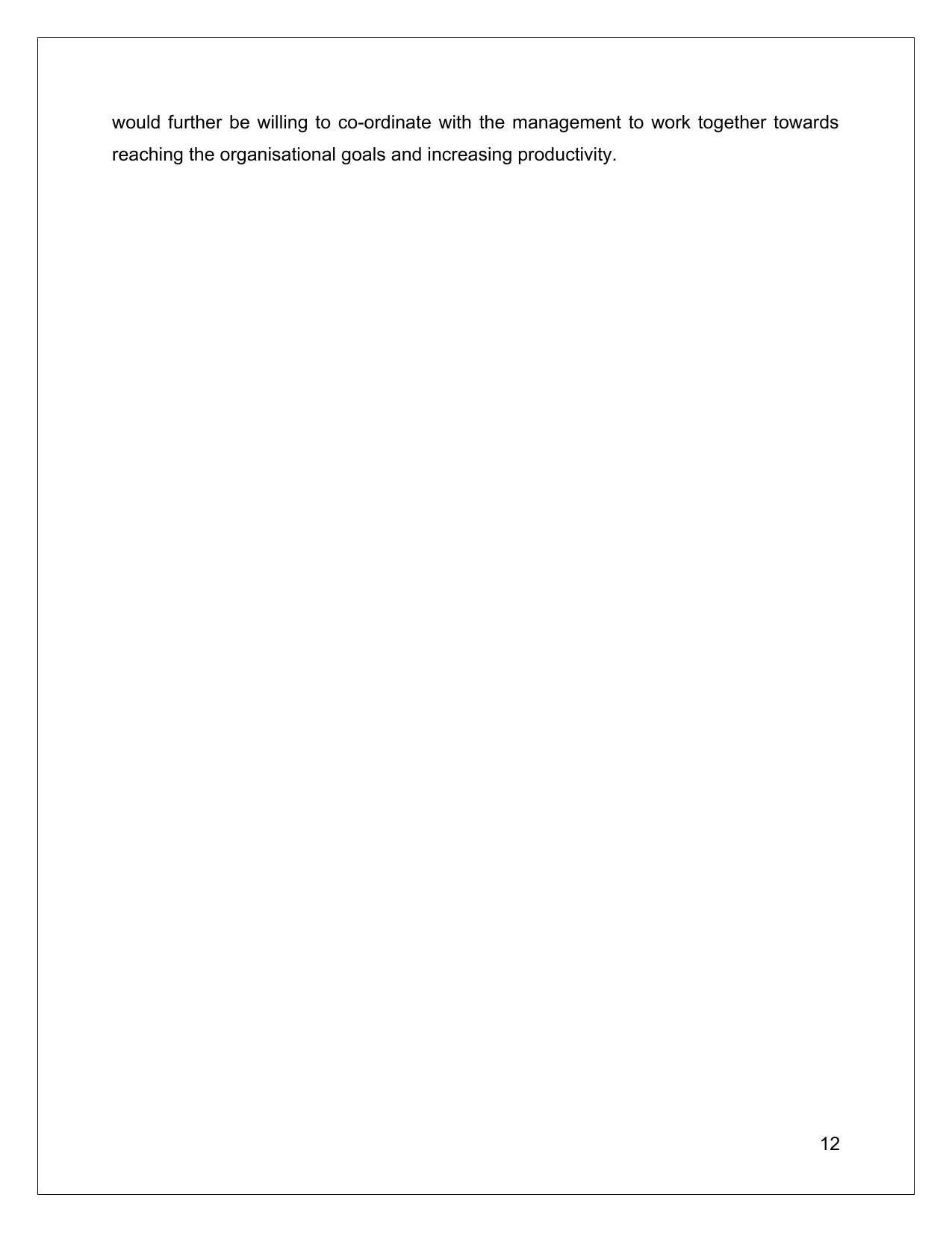
would further be willing to co-ordinate with the management to work together towards
reaching the organisational goals and increasing productivity.
12
reaching the organisational goals and increasing productivity.
12
⊘ This is a preview!⊘
Do you want full access?
Subscribe today to unlock all pages.

Trusted by 1+ million students worldwide
1 out of 22
Related Documents
Your All-in-One AI-Powered Toolkit for Academic Success.
+13062052269
info@desklib.com
Available 24*7 on WhatsApp / Email
![[object Object]](/_next/static/media/star-bottom.7253800d.svg)
Unlock your academic potential
Copyright © 2020–2025 A2Z Services. All Rights Reserved. Developed and managed by ZUCOL.





